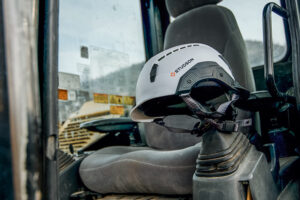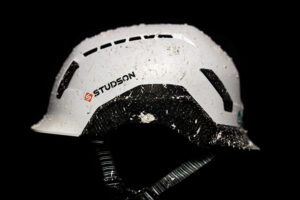Looking into the Future of Helmet Safety
By Ryan Barnes, Contributor

If you want to protect the brain during an impact you need shock-absorbing technology.
The construction industry has the highest number of both fatal and nonfatal traumatic brain injuries among U.S. workplaces― this is a fact. The National Institute for Occupational Safety and Health (NIOSH) tracks these statistics and it’s report from 2016 states over 2,200 lives were lost from traumatic brain injuries between 2003 and 2010 alone.
2,200 deaths. This is a staggering number. A number that only accounts for 25% of all construction industry deaths… a number only reflecting fatal traumatic brain injuries.
Yet, the equipment to prevent these accidents—the hard hat— hasn’t changed in over 100 years. The impact? Thousands of lives lost from preventable head injuries.
The landscape of the construction site has changed dramatically. To navigate the construction site terrain and conditions, construction workers are more than employees, they are industrial athletes. Whether you’re talking residential or commercial general contractors, oil & gas workers, mining, forestry, utilities, wind & solar energy, and many other trades, these workers are often performing under extreme conditions. Not only do they have the obstacles and challenges of a complex construction site to navigate, they have the natural elements to compete against. Yet, we expect them to do all of this safely and efficiently while wearing a hard hat designed in 1919.
The Next Generation of Head Protection

The construction industry has the highest number of both fatal and nonfatal traumatic brain injuries among U.S. workplaces.
Most traumatic brain injuries are a result of falling six feet or less. Falls are the leading cause of construction-worker fatalities, accounting for one-third of on-the-job deaths in the industry. The Bureau of Labor Statistics said brain injuries led to the deaths of at least 992 construction workers from 2011 through 2015. In most of these accidents, the unsecured hard hat falls off, leaving the head unprotected. A helmet that can’t stay on isn’t worth wearing—and it certainly won’t save your life.
For me, this is more than business. At 16, I suffered a traumatic head injury. I endured reconstructive surgery to the left side of my cheek. Though I made a full recovery, my face will always have titanium plates. My accident happened in the early 90’s before helmets were a requirement in ski racing. But since then, skiing, cycling, football, hockey, equestrian, and countless other sports have progressed into requiring equipment that prevents injuries and saves lives. So, why not the industrial trades?
Many of us can remember the days without seatbelts or laws that enforced wearing them. Now, it’s hard to imagine riding in a car without buckling-up. Shouldn’t the same be true on a job site? Especially if we know the horrific statistics of deaths related to brain injuries?
Despite current OSHA regulations, if we want to protect our people, the industry has to shift. We can do so much more than incorporating a chinstrap. Plus, the harness system is archaic and should be a thing of the past, like the hard hat. Many of the largest general contractors realize this and have begun testing new helmets.
The science is clear: if you want to protect the brain during an impact you need shock-absorbing technology, and these innovations exist; tubular structures like Koroyd® are super lightweight and are proven to absorb energy more efficiently than your standard EPS or EPP polymers. Technology that actually protects during oblique and rotational impacts. The question is, why hasn’t this become the benchmark for industrial head protection?
We also have digital technology integrations that help keep workers safe in extreme circumstances. The science is available and speaks for itself. The construction industry is full of innovation; we should be wearing it as well. Football, hockey, snow sports, cycling, and other contact sports are pushing the limits on how we protect the brain. I dare the industrial trades to do the same. The right thing to do as an industry is to provide our people with head protection from this century. CS
Ryan Barnes is the Founder/CEO of STUDSON, one of the latest brands to launch a new blend of technology in the industrial safety market (https://studson.com).



